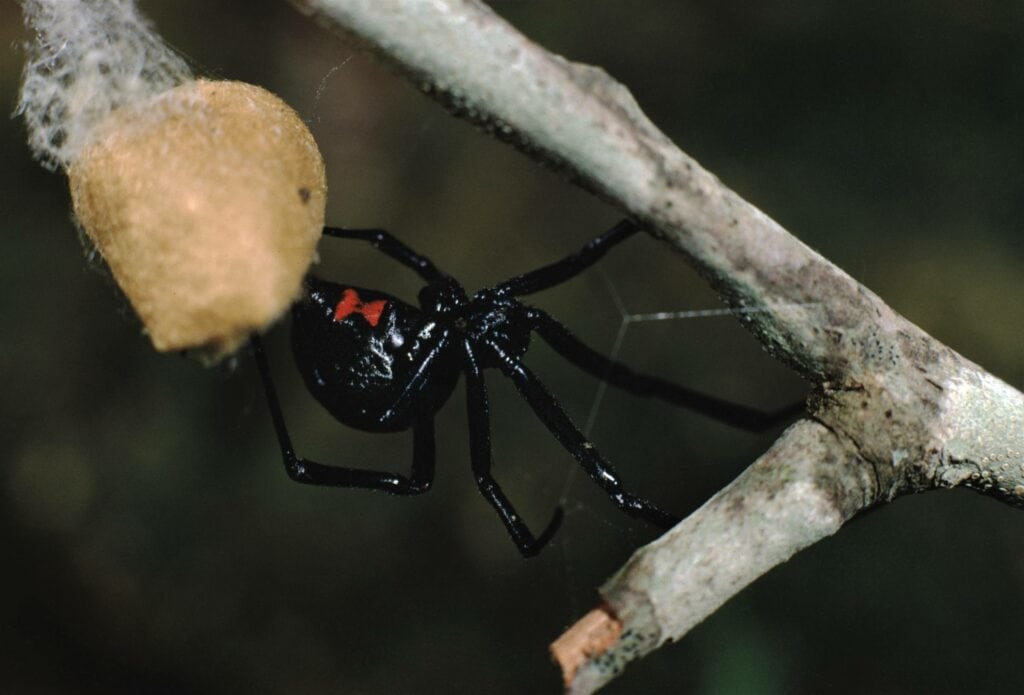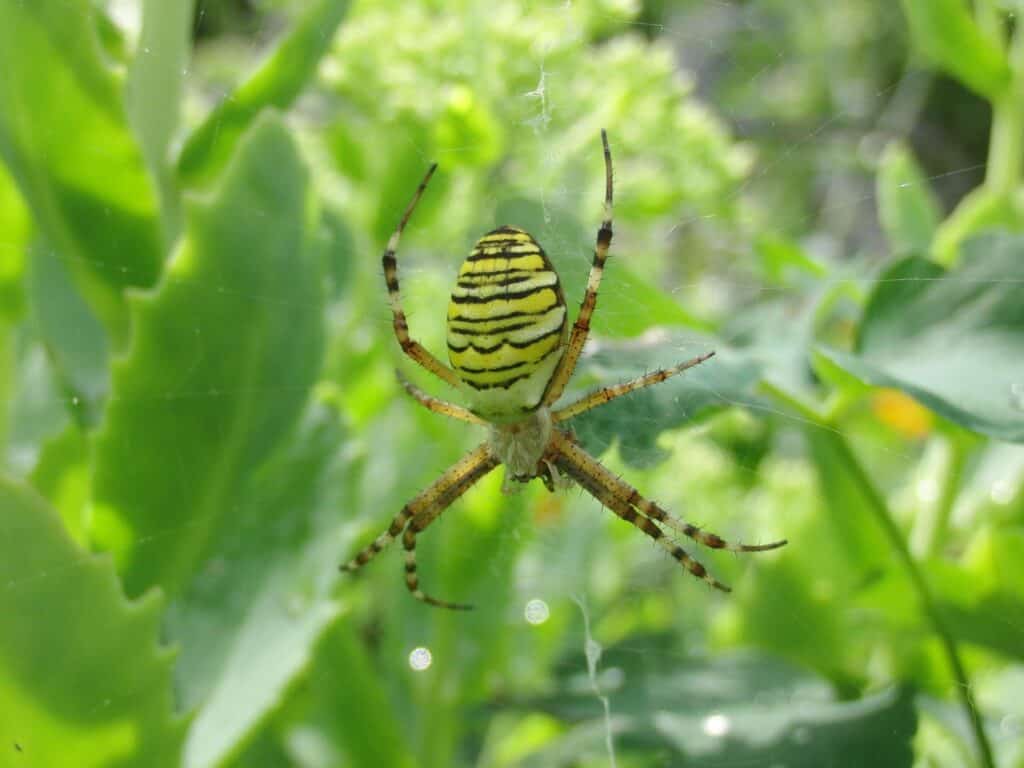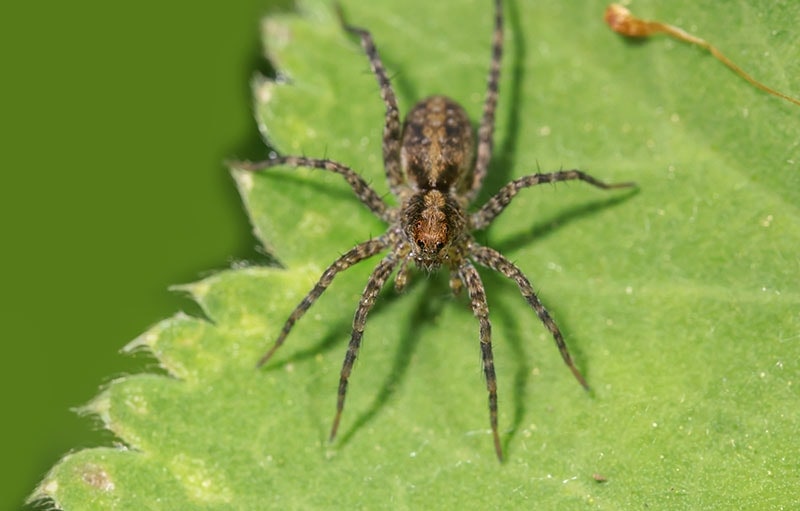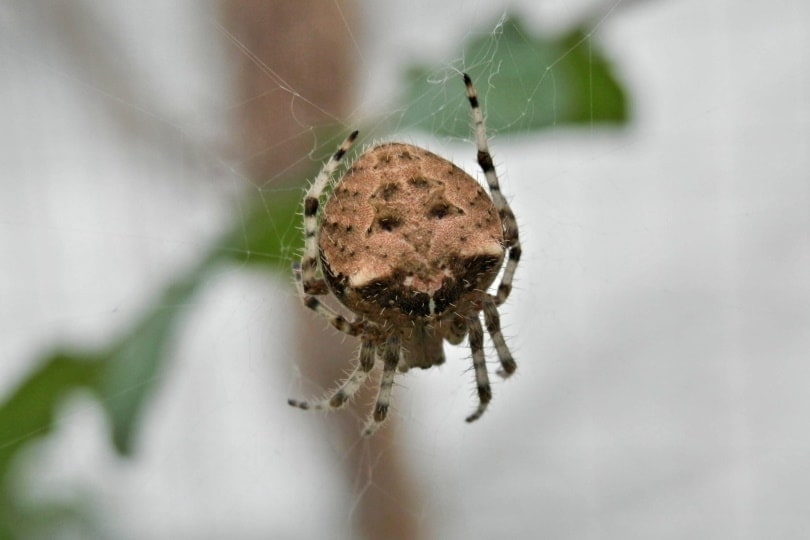Many people fear spiders more than other creepy crawlies like ants, centipedes, or cockroaches. In most cases, this fear comes from a concern over a potential spider bite and whether it can be harmful or fatal to humans or pets.
Fortunately, only a small number of spiders have venom that can cause medical problems in humans. Of them, only one species is commonly found in Montana and rarely causes serious health conditions or death in humans or pets. Learn more about the seven spiders found in Montana.

The 7 Spiders Found in Montana
1. Southern Black Widow

| Species: | L. mactans |
| Longevity: | 2 months to 1.5 years |
| Good to own as a pet?: | No |
| Legal to own?: | Yes |
| Adult size: | 0.6 to 5 cm |
| Diet: | Carnivorous |
The Southern black widow spider is a venomous spider found in the southeastern U.S. It’s the only venomous spider in Montana that can cause harm to humans. As babies, black widow spiders are white but gain shiny black bodies with a distinctive red hourglass mark on the abdomen as they age. Southern black widows show sexual dimorphism, meaning the males are typically smaller and live longer than the females.
Like other widow species, the Southern black widow got its name from the belief that they kill and consume their mate after mating, but this has only been observed in laboratory settings. Though the Southern black widow is one of the most venomous spiders in North America, its bite is rarely fatal to humans.
2. Banded Garden Spider

| Species: | A. trifasciata |
| Longevity: | 12 months |
| Good to own as a pet?: | No |
| Legal to own?: | Yes |
| Adult size: | 5 to 14.5 mm |
| Diet: | Carnivorous |
The banded garden spider is a species of orb-weaver spider that’s distributed around the world. Like other orb-weaver spiders, the banded garden spider is known for its web weaving and can construct webs with a diameter of 60 cm. The length of the web is determined by the size of the spider but may be as big as 2 meters.
The decorations in the web silk of orb-weaver spiders are believed to be visual signals, though the actual messages of the designs remain unknown. Decorative webs are more obvious, and therefore less likely to attract insects, indicating another purpose.
3. Candy-Striped Spider

| Species: | E. ovata |
| Longevity: | 12 months |
| Good to own as a pet?: | No |
| Legal to own?: | Yes |
| Adult size: | Up to 6 mm |
| Diet: | Carnivorous |
The candy-striped spider is native to Europe but has been introduced to North America. This spider got its name from its translucent legs and globular abdomen that may be white, cream, or green with a red stripe, two red stripes, or a row of dark spots.
Though it poses no threat to humans or pets, the candy-striped spider is a formidable predator that can eat insects many times larger than itself.
4. Hobo Spider

| Species: | E. agrestis |
| Longevity: | 2 years |
| Good to own as a pet?: | No |
| Legal to own?: | No |
| Adult size: | 7 to 14 mm |
| Diet: | Carnivorous |
The hobo spider is a type of funnel-web spider, named for its funnel-shaped silk webs. These spiders vary in appearance, though they’re usually brown with chevron-shaped patterns on the back and a light stripe on the belly. Hobo spiders differ from other funnel-web spiders in that they lack colored bands near the legs and two dark stripes on the back.
Hobo spiders prefer to build webs near human dwellings, such as homes, sheds, and office buildings. Bites are rare, and despite a lot of claims, the hobo spider doesn’t have venom that’s medically significant to humans.
5. Red-Spotted Ant Mimic

| Species: | C. descripta |
| Longevity: | 12 months |
| Good to own as a pet?: | No |
| Legal to own?: | Yes |
| Adult size: | 5 to 14.5 mm |
| Diet: | Carnivorous |
The red-spotted ant mimic spider is a widely distributed spider that’s found throughout the U.S. and Canada. Named for its similar look and behavior to ants, the spider is a hunter spider, meaning it doesn’t construct a web to attract insects. Instead, it mimics ant behavior to get close enough for an attack.
As a hunter species, the red-spotted ant mimic spider is highly aggressive, but more toward insects than humans. In the rare case of a bite, the venom is more likely to cause some irritation and isn’t medically significant.
6. Tigrosa Grandis

| Species: | T. grandis |
| Longevity: | 12 months |
| Good to own as a pet?: | No |
| Legal to own?: | No |
| Adult size: | 2.5 cm |
| Diet: | Carnivorous |
The Tigrosa grandis is a species of wolf spider that’s found in a range of habitats all over the world. Named “wolf” for their excellent eyesight and remarkable agility that makes them incredible hunters, wolf spiders live in solitude and don’t construct webs to trap insects.
Wolf spiders are unique in several ways. The females carry the unhatched egg sac at the end of her abdomen, while still hunting. Once hatched, the young stay on the female’s abdomen until they grow large enough to care for themselves. Though aggressive hunters, wolf spiders need to be continually provoked to bite. In humans, the venom may cause swelling and itching, but is unlikely to be more serious.
7. Cat-Faced Spider

| Species: | A. gemmoides |
| Longevity: | 12 months |
| Good to own as a pet?: | No |
| Legal to own?: | Yes |
| Adult size: | 5.4 to 25 mm |
| Diet: | Carnivorous |
Cat-faced spiders, also known as jewel spiders, are a type of orb-weaver spider distributed across the U.S. and Canada. Like other orb-weaver spiders, the cat-faced spider is known for constructing elaborate webs with intricate designs.
Cat-faced spiders feature distinctive horn-shaped growths on their abdomen but come in a variety of colors. Like the beloved children’s novel, Charlotte’s Web, female cat-faced spiders die after laying a large egg sac with hundreds of eggs. Once hatched, the babies hitch a ride on the silk strands to travel miles away.

Are There Poisonous Spiders In Montana?

Before this question can be answered, we need to address the difference between “poisonous” and “venomous.” Poisonous means that something is harmful to eat, breathe, or touch. Venomous means that a toxin is injected into the skin, such as through a spider’s fangs. In this respect, nearly all spiders are venomous, though only some have fangs and venom that can affect humans. Their venom is designed to subdue prey, such as insects, amphibians, or small mammals, not humans. If a human is bitten and has a reaction to the venom, it’s merely a side effect of the venom and not the intention of the spider.
A small number of spiders have venom that can cause localized pain or irritation in humans, much like wasps and bees. Of around 50,000 species of spiders known, only about 25 of them have venom that is “medically significant” and can cause illness in humans. Of the spiders in Montana, only the Southern black widow has a bite that can cause health concerns in vulnerable people, such as the very young, very old, or chronically ill. In most people, a bite from a Southern black widow would cause pain and malaise.

Conclusion
Montana has a range of interesting and beneficial spiders that help with pest control without posing a threat to humans or pets. Though many of these spiders, such as hobo spiders and orb-weaver spiders, prefer to construct webs near the home, they have short lifespans and control pests like mosquitoes, flies, and moths.
Related read:
Featured Image Credit: Eric_Karits, Pixabay
